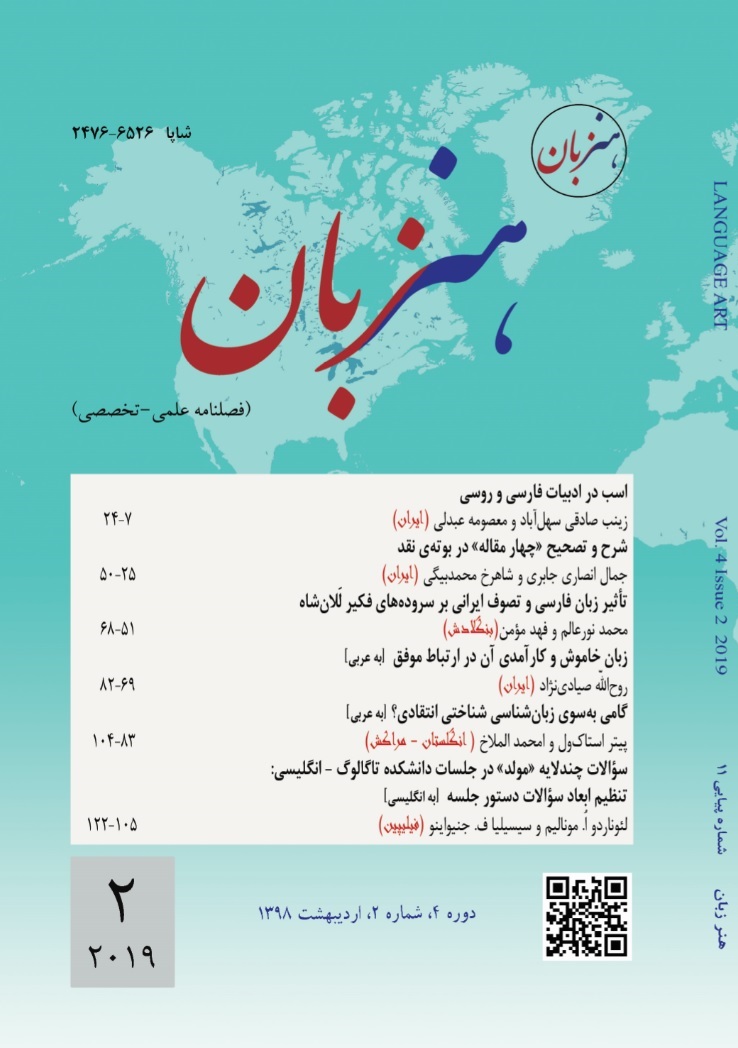اسب در ادبیات فارسی و روسی
DOI:
https://doi.org/10.22046/LA.2019.07الكلمات المفتاحية:
اسب، ادبیات فارسی، ادبیات روسی، آلک دل آگاه، اسطوره.الملخص
المراجع
Pushkin, A. (1966). čand čâmeh va derâm, Mascow: Progress.
Karimi Motahar, J. & M. Yahyapour. (2009). The Grief is Anton Chekhov and the Only One is Nur Mohammadi., Vaprosy Filalogi, 31: 1, 90-94.
Golkar, A. & P. Hosseini. (2014). tahqiqâte irânʃenâsi: barrasiye ʔârâ va ʔâsâre nâʃenâxteye barxi ʔaz irânʃenâsâne rus dar babe ʔadabiyyâte fârsi, Nameye Farhangestan, 3: 51, 108-128.
Mahmoodi, M. & Sh. Rezaie. (2014). barrasiye tatbiqiye dâstâne kutâhe gole xâs ʔaz mansure yâquti va deltangi ʔaz čexof, Research in Contemporary World Literature, Sprong & Summer 2014, 1: 19, 87-102.
Hinnells, J. (2007). Persian Mythology, Translated by: Amouzegar, Zh. & Tafazzoli, A., 11th Ed., Tehran: Cheshmeh.
Yahyapour, M.; Sadeghi Sahl Abadi, Z. & J. Karimi Motahar. (2012). nikolây gomiliov va maʃreq zamin, Tehran: Institute for Humanities & Cultural Studies.
Fatayi, G. (2005). tahlili bar vâžeye ʔasb dar farhangr irâne bâstân va zabâne fârsi va taʔsire ʔân bar farhang va zabâne ʔarmani, Peyman, 9: 34, 82-94.
Akishina A. A. et al (2010). istoriya rossii v sobytiyakh i sud'bakh, uchebnoye posobiye s mul'timediynym prilozheniyem dlya izuchayushchikh russkiy yazyk kak inostrannyy, Moscow: Russian Language.

